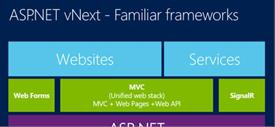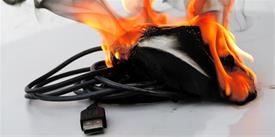Laughter Is the Best Marketing: Memes as a Marketing Medium
When in Rome, do as the Romans do, When you go online to market your brand speak in a language the Internet community understands.
“I don’t always finish a YouTube ad, but when I do, it’s because there’s no skip button.”
The statement above is an attempt at memes. If you recognize it, you are well-versed in internet-speak. The meme is from a 2007 TV ad featuring Jonathan Goldsmith. In it, he says, “I don’t always drink beer, but when I do, I prefer Dos Equis.” Since then, Goldsmith’s line has become a meme template, altered in various ways to make fun of customs, pop culture, and other relatable things.
Post-millennial generations are all embracing the fun-loving culture of memes. This trend puts humor at the top of marketing strategies today.
Humor Can Make Ads Hard to Resist
Almost 59% of millennials skip YouTube ads. A few ads make it past the five-second mark, but only if they are witty or relatable. It’s a bonus if they feature a meme, such as World of Warcraft’s ad featuring Chuck Norris.
In advertising, humor has always been a way to call attention. But memes require a new level of understanding from copywriters and content creators. Through memes, the Internet created a new lingo of its own. Companies should also be proficient in this language.
Speaking Your Market’s Language
Earning your target market’s adoration lays the ground for proper brand reputation management. Relating to your consumers is the best way to get their trust, and to do that, you have to speak their language.
The Language of Memes
So what exactly is a meme? In the 1970s, it was first used by biologist Richard Dawkins in his book, “The Selfish Gene.” Dawkins coined the term to refer to how ideas or behaviors spread from one culture to another—through replication or mutation—much like a gene. Fashion and catchphrases are two of his examples.
According to netizens, the first recorded meme is a cartoon from the 1920s. The cartoon has two panels: the first one is a well-drawn portrait, subtitled, “How you think you look like when a flashlight is taken.” The second panel is a poorly drawn sketch, almost a doodle, with the caption, “How you really look.” This is a variation of the “Expectation vs. Reality” template.
This cartoon strips down the basic characteristics of a successful meme. First, it establishes a recognizable format that people can edit, to make their own content or joke. Second, it is relatable, because people should want to share it so it can go viral. Finally, it satirical or self-deprecating, which is often the case for memes today.
Sometimes, memes even call attention to issues like anxiety, but in a lighthearted way. New meme formats are hinging more on the darker side of comedy, especially after 2020. This shows how memes have evolved; a long way from the era of Lolcats and the Me Gusta face.
Successful Meme Marketing
As the marketing workforce becomes younger, more brands are recognizing the power of memes. Here are a few memorable examples:
- Barkbox is an online shop for pet supplies and subscription boxes. They post most of their publicity materials on Instagram. A simple dog video alone can spark millions of views, but Barkbox takes it a step further. They feature relatable captions and funny images, such as a collage of dogs that look like Tom Brady.
- Denny’s Diner maintains a presence on Twitter by regularly posting one-liners and punchlines. They may even be more prolific on social media than an actual comedian. Occasionally, they post visual memes featuring their logo or products.
- Gucci has maintained a high-brow sense of style, so it seems unlikely that they’ll attach self-deprecating humor to their brand. But they surprised everyone with the #TWFGucci campaign, which commissioned artists to incorporate Gucci watches in popular memes. In France, educational support company SchoolMouv once used a meme as a street ad. It featured a black and white portrait of a historical figure. On top is a text in all caps, using the Impact font style, the quintessential meme typeface.
Meanwhile, in the Philippines, a service company grew an online following by sticking to meme-based content. Called Angkas, the company offers motorcycles-for-hire and package delivery. Angkas makes sure to release timely content. When the movie “It” was showing in theatres, they created a meme where Pennywise lures a person into the sewer by claiming that “there’s no traffic” there.
Don’t Try Too Hard
Crafting a meme ad is very different from crafting advertorials or press releases. The aim is to make people laugh. This is what draws the views. A seamless introduction of your brand only seals the deal and leaves the impression you need.
So memes can either make or break your brand. This is why copywriters should learn the language of memes. If you make a meme without being well-versed in the culture, the ad can only come off as ungenuine.
Related Posts
In almost all forms of modern business, marketing is an essential function.
To make your business successful in the modern age, you need to excel at digital marketing and have a strategy that can allow you to beat out the competition.
In the ever-changing digital marketing landscape, defined by transient attention spans akin to ephemeral specters, the strategic use of video has proven to be an alchemical concoction, flawlessly transmuting mere curiosity into a passionate embrace of customer interaction.
Core Web Vitals is a set of performance metrics developed by Google to measure the quality of a website's user experience.
It’s certain the people you look up to the most in your professional life qualify as thought leaders.
Task management is usually busy and tricky, whatever sphere it touches on.
















Comments
comments powered by Disqus